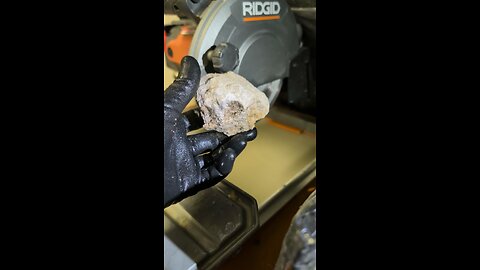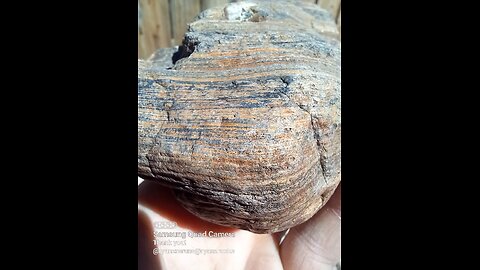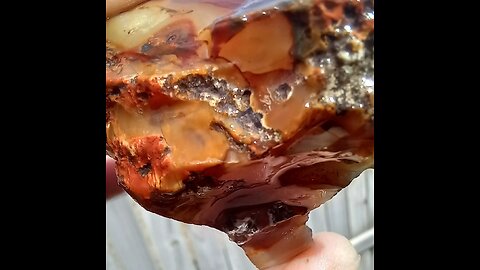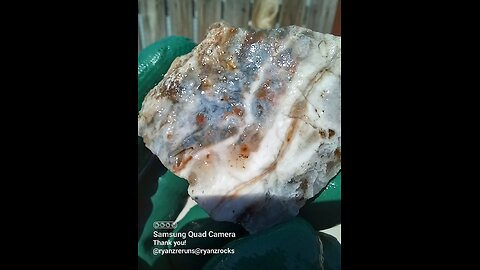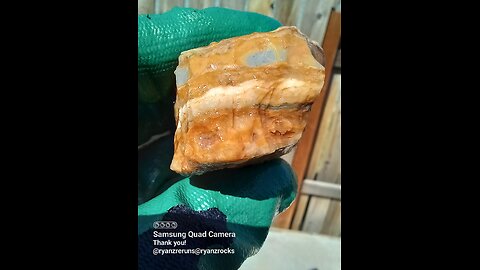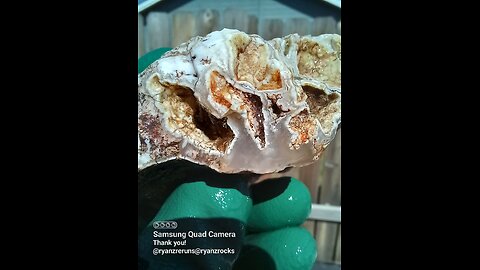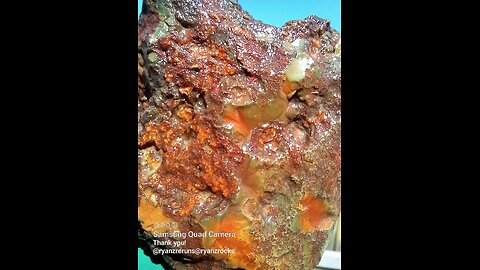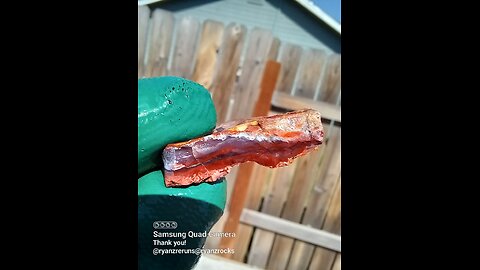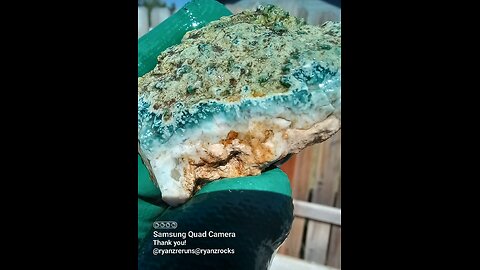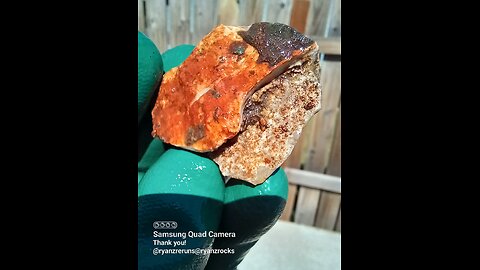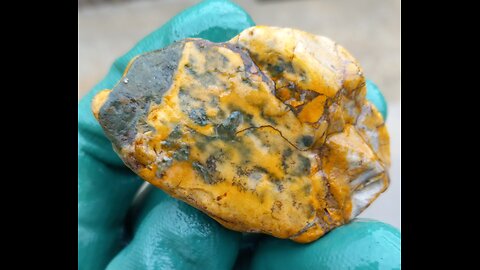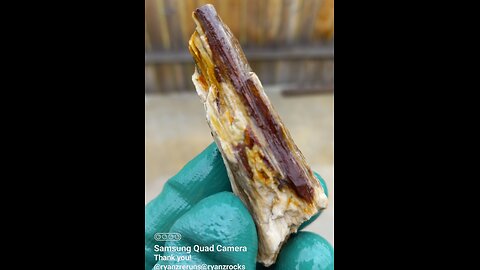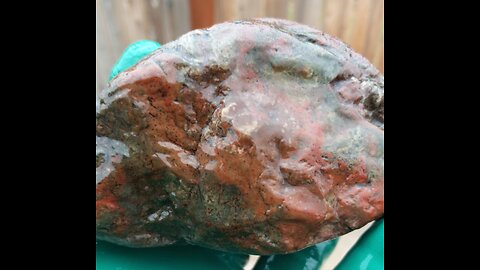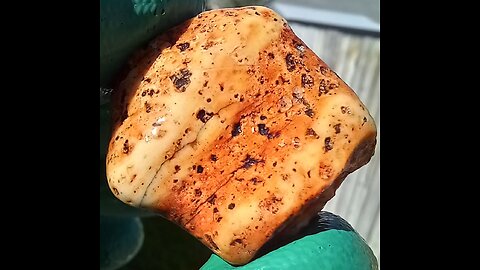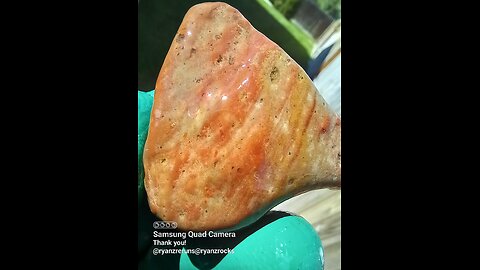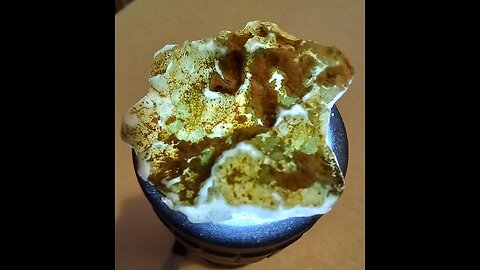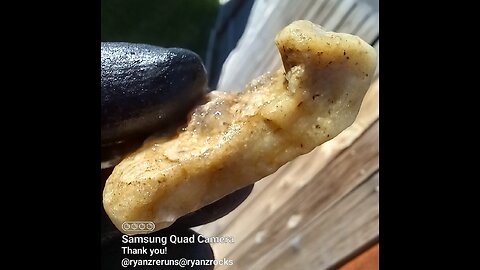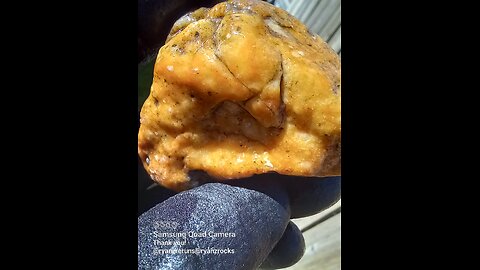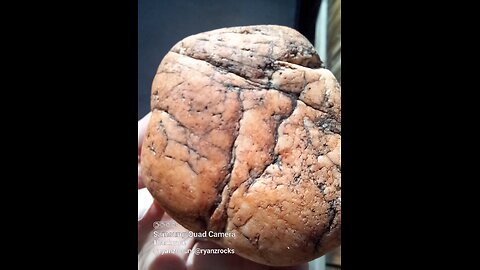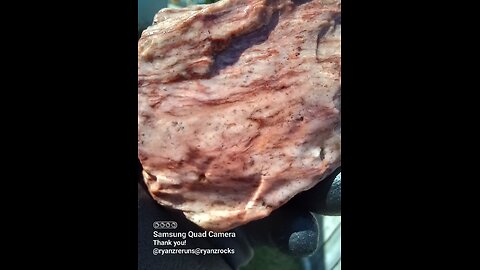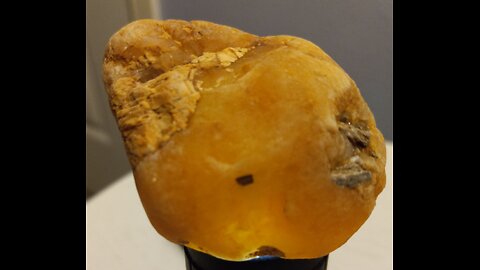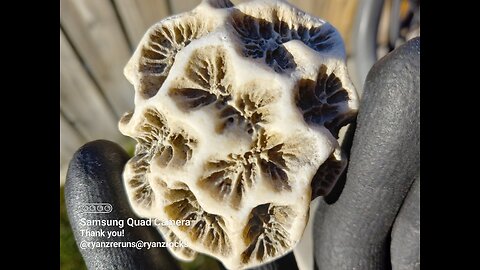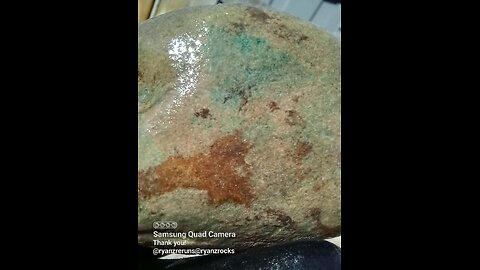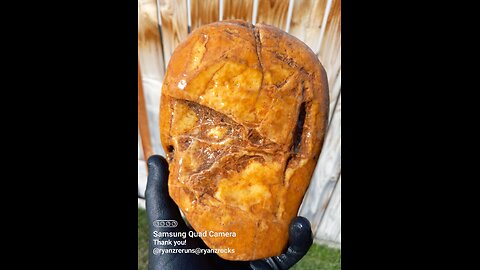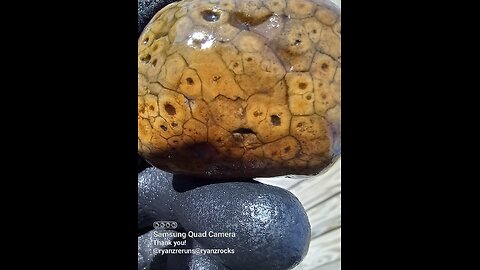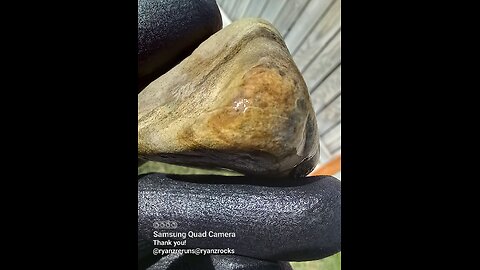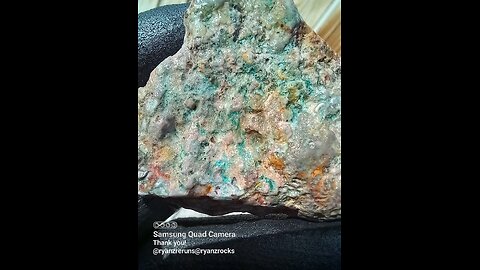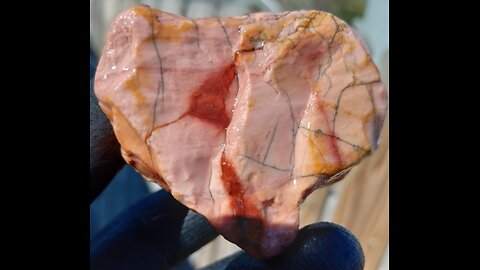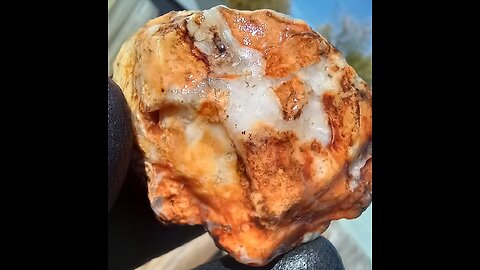Premium Only Content
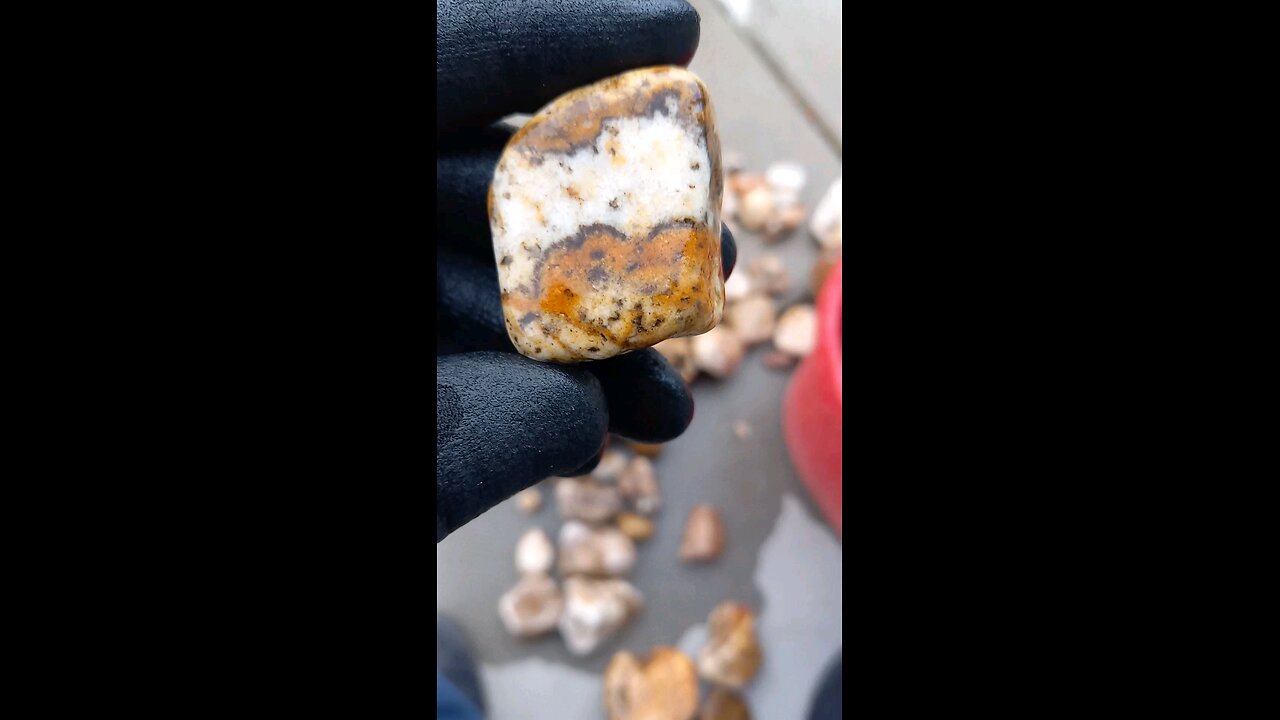
Boring!
Smooth as Glass!
Cool Staining Pattern!
Pretty green!
Love the Green!
Petrified Wood!
Rusty Red Agate!
Cool Banding!
Orangey!
Cool Banding!
Glow Shard!
Bright White!
No idea!
No idea!
Orange Crush!
Pretty Pink Banding!
Piece of Petrified Wood!
Reds!
Pretty Yellow Glow Nodule!
Coral Fossil!
Greens & Browns!
Big ol' nodule!
Petroskey stone?
Green Sandstone!
Pretty greens!
Pink!
Contrasting colors!
Cool Staining Pattern!
Based on the visual characteristics of the rock shown in the image, here are some possibilities for its identification:
Jasper: Jasper is an opaque variety of chalcedony, which is a type of quartz. It often comes in red, yellow, brown, or green and can have banding or patterns. Your rock's coloration with the reddish-brown and white could fit this description, especially if it has a waxy feel when touched.
Banded Iron Formation (BIF): If the rock has layers of different colors, especially iron-rich layers (red, brown) alternating with silica-rich layers (white, light grey), it could be a piece of a banded iron formation. These are typically found in ancient geological settings and are indicative of early Earth's oxygenation events.
Agate: Agate is another type of chalcedony, known for its fine grain and bright, attractive colors, often with bands or layers. If your rock has any subtle banding or more defined layers, it might be classified as agate.
Iron-stained Quartzite: If the rock has been subjected to metamorphism and contains iron, it could be quartzite with iron staining. Quartzite is metamorphosed.
-
 11:08
11:08
Tundra Tactical
4 hours ago $0.44 earnedDead Air Silencers 10 YEARS of INNOVATION!
10.3K1 -
 1:20:32
1:20:32
The Amber May Show
1 day ago $2.98 earnedUSAID | Where Is All The Money Going | IRS Spying On Our Bank Accounts | Sam Anthony
32K18 -
 1:50:57
1:50:57
2 MIKES LIVE
3 hours ago2 MIKES LIVE #175 Deep Dive Monday!
16.8K2 -
 1:24:51
1:24:51
The Big Mig™
22 hours agoHow Transparency Will Kill The Deep State
20.3K3 -
 42:39
42:39
Dad Dojo Podcast
1 day ago $0.34 earnedEP18: NEW YEAR, NEW COLONOSCOPY
15.4K -
 1:54:36
1:54:36
Revenge of the Cis
6 hours agoEpisode 1439: Holy Guacamole
81K37 -
 1:01:50
1:01:50
In The Litter Box w/ Jewels & Catturd
1 day ago1 TRILLION! | In the Litter Box w/ Jewels & Catturd – Ep. 733 – 2/3/2025
87K54 -
 1:38:44
1:38:44
The Quartering
8 hours agoTrump's Tariffs Already Work, Blackhawk Pilot Coverup, DNC Makes Insane David Hogg Appointment
107K90 -
 LIVE
LIVE
Dr Disrespect
10 hours ago🔴LIVE - DR DISRESPECT - TARKOV - ZERO TO HERO RAIDS ONLY
2,425 watching -
 1:13:51
1:13:51
Candace Show Podcast
8 hours agoEXCLUSIVE! Did Ryan Reynolds Extort Hollywood Execs? | Candace Ep 143
162K223
